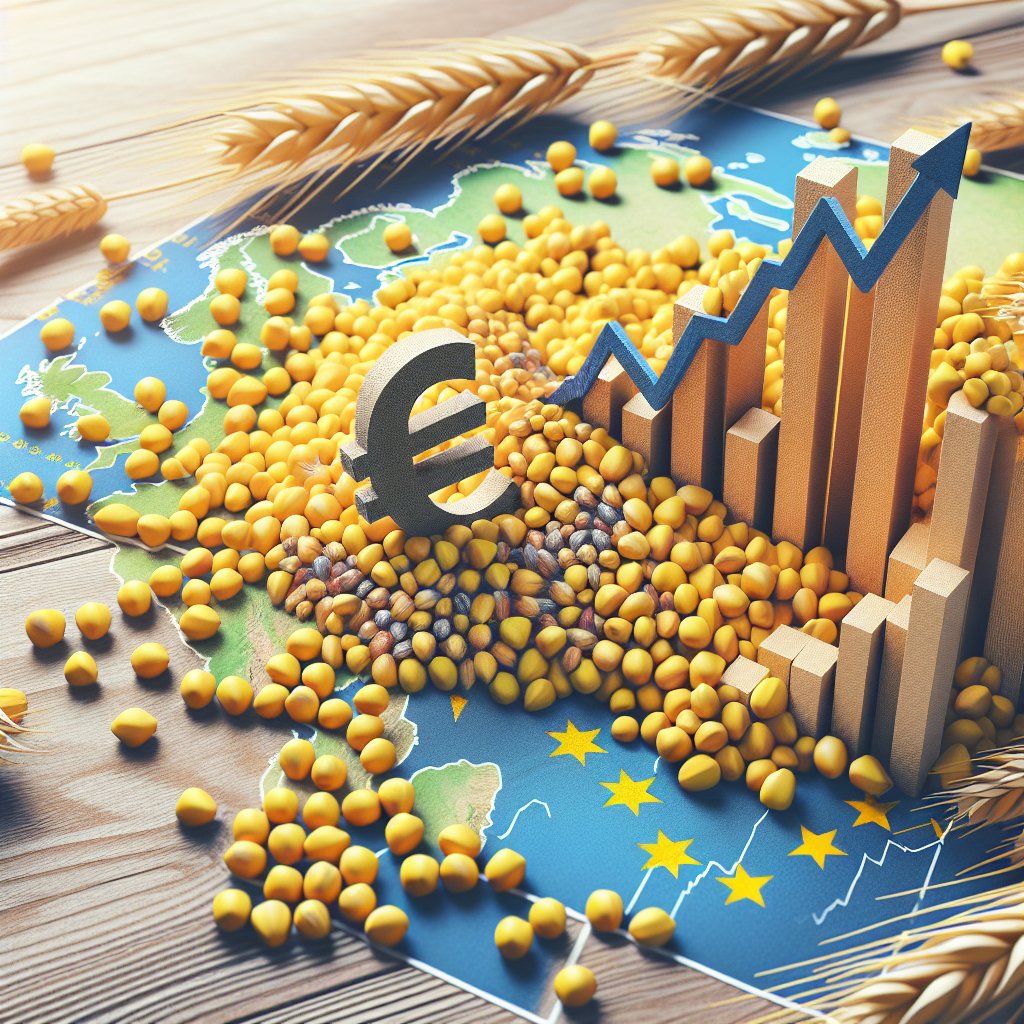The prices of rapeseed on European markets are influenced by a myriad of factors, including supply and demand dynamics, weather conditions, and global market trends. Understanding these elements is crucial for farmers, traders, and policymakers alike, as they navigate the complexities of agricultural economics. This article delves into the current state of rapeseed prices in Europe, examining the factors that shape these prices and the implications for the agricultural sector.
Current Trends in Rapeseed Prices
In recent years, rapeseed has gained prominence as a vital crop in Europe, primarily due to its use in biofuels and cooking oils. The demand for rapeseed oil has surged, driven by a growing preference for healthier cooking options and the push for renewable energy sources. As a result, rapeseed prices have experienced significant fluctuations, reflecting the changing landscape of agricultural markets.
As of 2023, rapeseed prices in Europe have shown a notable increase compared to previous years. Factors contributing to this upward trend include:
- Increased Demand: The global demand for vegetable oils, particularly rapeseed oil, has risen sharply. This demand is fueled by the food industry, as well as the biofuel sector, which seeks sustainable alternatives to fossil fuels.
- Supply Chain Disruptions: The COVID-19 pandemic and subsequent geopolitical tensions have disrupted supply chains, leading to shortages in various agricultural products, including rapeseed. These disruptions have resulted in higher prices as buyers compete for limited supplies.
- Weather Conditions: Weather plays a crucial role in agricultural production. Unfavorable weather conditions, such as droughts or excessive rainfall, can significantly impact rapeseed yields, leading to price increases as supply diminishes.
- Government Policies: European Union policies aimed at promoting sustainable agriculture and reducing carbon emissions have also influenced rapeseed prices. Subsidies for biofuels and incentives for sustainable farming practices can drive up demand and, consequently, prices.
Regional Variations in Pricing
While rapeseed prices are generally on the rise across Europe, there are notable regional variations that reflect local market conditions. Countries such as France, Germany, and Poland are among the largest producers of rapeseed in Europe, and their pricing dynamics can differ significantly.
France
France is the leading producer of rapeseed in Europe, and its prices are often seen as a benchmark for the rest of the continent. The French market has been characterized by strong demand from both domestic and international buyers. The country’s favorable climate and advanced agricultural practices contribute to relatively high yields, which can help stabilize prices even in times of increased demand.
Germany
Germany, another major player in the rapeseed market, has also experienced price increases. The German government’s commitment to renewable energy has led to a surge in demand for rapeseed oil for biodiesel production. However, the country faces challenges such as fluctuating weather patterns and competition from other oilseed crops, which can impact overall production and pricing.
Poland
Poland has emerged as a significant producer of rapeseed in recent years, benefiting from EU subsidies and a growing domestic market. Polish rapeseed prices are often lower than those in France and Germany, primarily due to lower production costs. However, as demand continues to rise, Polish farmers may find themselves in a position to increase prices, especially if they can enhance their production efficiency.
Future Outlook for Rapeseed Prices
The future of rapeseed prices in Europe remains uncertain, influenced by various factors that could either bolster or hinder price growth. Analysts predict that the demand for rapeseed will continue to rise, driven by the ongoing transition towards renewable energy and healthier food options. However, several challenges could impact this trajectory:
- Climate Change: As climate change continues to affect weather patterns, the agricultural sector may face increased risks related to crop yields. Farmers will need to adapt to these changes to maintain production levels and stabilize prices.
- Global Competition: The global market for oilseeds is highly competitive, with countries like Canada and Ukraine also producing significant quantities of rapeseed. Changes in global supply and demand dynamics could impact European prices.
- Technological Advancements: Innovations in agricultural technology, such as precision farming and genetically modified crops, could enhance yields and reduce production costs. This could lead to more stable prices in the long run.
- Policy Changes: Future changes in EU agricultural policies or trade agreements could also influence rapeseed prices. Farmers and traders must stay informed about potential regulatory shifts that could impact the market.
Conclusion
The prices of rapeseed on European markets are shaped by a complex interplay of factors, including demand dynamics, supply chain issues, and regional variations. As the agricultural landscape continues to evolve, stakeholders must remain vigilant and adaptable to navigate the challenges and opportunities that lie ahead. Understanding these trends will be essential for farmers, traders, and policymakers as they work to ensure a sustainable and profitable future for rapeseed production in Europe.




